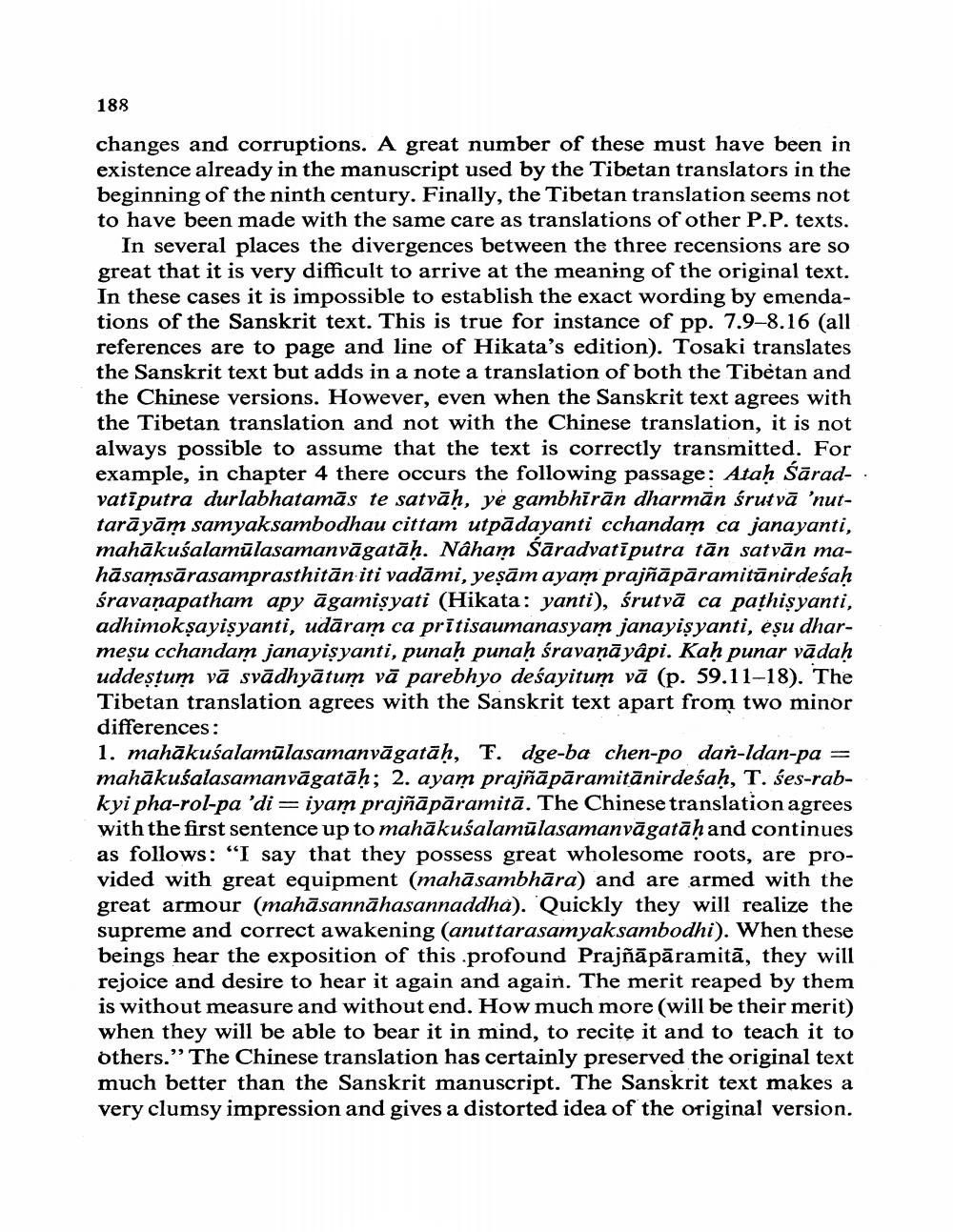Book Title: Notes On Prajnaparamita Texts Author(s): J W De Jong Publisher: J W De Jong View full book textPage 2
________________ 188 changes and corruptions. A great number of these must have been in existence already in the manuscript used by the Tibetan translators in the beginning of the ninth century. Finally, the Tibetan translation seems not to have been made with the same care as translations of other P.P. texts. In several places the divergences between the three recensions are so great that it is very difficult to arrive at the meaning of the original text. In these cases it is impossible to establish the exact wording by emendations of the Sanskrit text. This is true for instance of pp. 7.9-8.16 (all references are to page and line of Hikata's edition). Tosaki translates the Sanskrit text but adds in a note a translation of both the Tibetan and the Chinese versions. However, even when the Sanskrit text agrees with the Tibetan translation and not with the Chinese translation, it is not always possible to assume that the text is correctly transmitted. For example, in chapter 4 there occurs the following passage: Atah Śārad- . vatīputra durlabhatamās te satvāh, ye gambhirān dharmān śrutvā 'nuttarāyām samyaksambodhau cittam utpā dayanti cchandam ca janayanti, mahākušalamūlasamanvāgatāḥ. Nâham Sāradvatiputra tān satvān mahāsamsārasamprasthitān iti vadāmi, yeşām ayam prajñāpāramitānirdeśaḥ śravanapatham apy āgamisyati (Hikata: yanti), śrutvā ca pathişyanti, adhimokşayişyanti, udāram ca pritisaumanasyam janayisyanti, éşu dharmeşu cchandam janayisyanti, punaḥ punaḥ śravanāyāpi. Kah punar vādah uddestum vā svādhyātum vā parebhyo deśayitum vā (p. 59.11-18). The Tibetan translation agrees with the Sanskrit text apart from two minor differences: 1. mahākusalamūlasamanvāgatāḥ, T. dge-ba chen-po dan-ldan-pa = mahākušalasamanvāgatāḥ; 2. ayam prajñāpāramitānirdeśaḥ, T. ses-rabkyi pha-rol-pa 'di = iyam prajñāpāramitā. The Chinese translation agrees with the first sentence up to mahākusalamūlasamanvāgatāhand continues as follows: "I say that they possess great wholesome roots, are provided with great equipment (mahāsambhāra) and are armed with the great armour (mahāsannāhasannaddha). Quickly they will realize the supreme and correct awakening (anuttarasamyaksambodhi). When these beings hear the exposition of this profound Prajñāpāramitā, they will rejoice and desire to hear it again and again. The merit reaped by them is without measure and without end. How much more (will be their merit) when they will be able to bear it in mind, to recite it and to teach it to others.” The Chinese translation has certainly preserved the original text much better than the Sanskrit manuscript. The Sanskrit text makes a very clumsy impression and gives a distorted idea of the original version.Page Navigation
1 2 3 4 5 6 7 8 9 10 11 12 13
